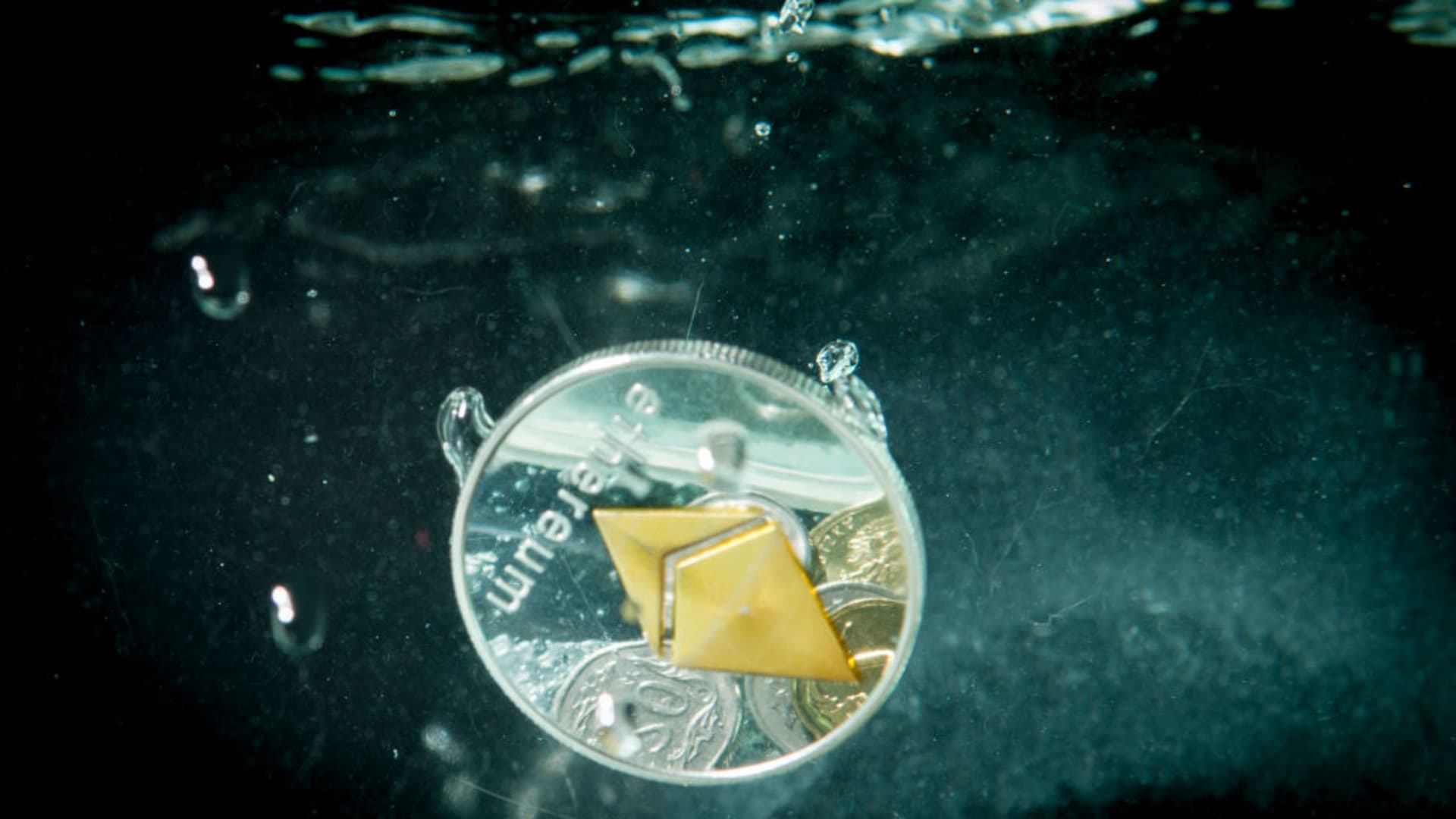Another controversial cryptocurrency is causing havoc in the digital asset market — and this time, it’s not a stablecoin.
Staked ether, or stETH, is a token that’s supposed to be worth the same as ether. But for the past few weeks, it has been trading at a widening discount to the second-biggest cryptocurrency, fanning the flames of a liquidity crisis in the crypto market.
On Friday, stETH fell as low as 0.92 ETH, implying an 8% discount to ether.
Here’s everything you need to know about stETH, and why it has crypto investors worried.
What is stETH?
Each stETH token represents a unit of ether that has been “staked,” or deposited, in what’s called the “beacon chain.”
Ethereum, the network underpinning ether, is in the process of upgrading to a new version that’s meant to be faster and cheaper to use. The beacon chain is a testing environment for this upgrade.
Staking is a practice where investors lock up their tokens for a period of time to contribute to the security of a crypto network. In return, they receive rewards in the form of interest-like yields. The mechanism behind this is known as “proof of stake.” It’s different from “proof of work,” or mining, which requires lots of computing power — and energy.
To stake on Ethereum currently, users have to agree to lock away a minimum 32 ETH until after the network upgrades to a new standard, known as Ethereum 2.0.
However, a platform called Lido Finance lets users stake any amount of ether and receive a derivative token called stETH, which can then be traded or lent on other platforms. It is an important part of decentralized finance, which aims to replicate financial services like lending and insurance using blockchain technology.
StETH isn’t a stablecoin like tether or terraUSD, the “algorithmic” stablecoin that collapsed last month under the strain of a bank run. It’s more like an IOU — the idea being that stETH holders can redeem their tokens for an equivalent amount of ether once the upgrade completes.
Decoupling from ether
When the Terra stablecoin project imploded, stETH’s price began trading below ether’s as investors raced for the exit. A month later, crypto lender Celsius started halting account withdrawals, which saw stETH’s value dropping even further.
Celsius acts a lot like a bank, taking users’ crypto and lending it to other institutions to generate a return on deposits. The firm took users’ ether and staked it through Lido to boost its profits.
Celsius has more than $400 million in stETH deposits, according to data from DeFi analytics site Ape Board. The fear now is that Celsius will have to sell its stETH, resulting in hefty losses and putting more downward pressure on the token.
But that’s easier said than done. StETh holders won’t be able to redeem their tokens for ether until six to 12 months after an event known as the “merge,” which will complete Ethereum’s transition from proof of work to proof of stake.
This comes at a price, as it means investors are stuck with their stETH unless they choose to sell it on other platforms. One way to do this is to convert stETH to ether using Curve, a service that pools together funds to enable faster trading in and out of tokens.
Curve’s liquidity pool for switching between stETH and ether “has become quite unbalanced,” said Ryan Shea, economist at crypto investment firm Trakx.io. Ether accounts for less than 20% of reserves in the pool, meaning there wouldn’t be enough liquidity to meet every stETH withdrawal.
“Staked ETH issued by Lido is backed 1:1 with ETH staking deposits,” Lido said in a tweet last week, attempting to calm investor fears over stETH’s growing divergence from the value of ether.
“The exchange rate between stETH:ETH does not reflect the underlying backing of your staked ETH, but rather a fluctuating secondary market price.”
Crypto contagion
Like many facets of crypto, stETH has been caught up in a whirlwind of negative news affecting the sector.
Higher interest rates from the Federal Reserve have triggered a flight to safer, more liquid assets, which has in turn led to liquidity issues at major firms in the space.
Another company with exposure to stETH is Three Arrows Capital, the crypto hedge fund which is rumored to be in financial trouble. Public blockchain records show that 3AC has been actively selling its stETH holdings, and 3AC co-founder Zhu Su has previously said his firm is considering asset sales and a rescue by another firm to avoid collapse.
Investors worry that the fall in stETH’s value will hit even more players in crypto.
“In crypto there is no central bank,” Shea said. “Things will just have to play out, and it will continue to weigh on crypto asset prices, compounding the negative impact from the macro backdrop.”
Bitcoin briefly sank below $18,000 a coin on Saturday, pushing deeper into 18-month lows. It’s since recovered back above $20,000. Ether at one point dropped below $900, before retaking $1,000 by Monday.
The ‘merge’
The stETH debacle has also led to fresh concerns over the security of Ethereum. About a third of all the ether locked into Ethereum’s beacon chain is staked through Lido. Some investors worry this may give a single player too much control over the upgraded Ethereum network.
Ethereum recently completed a dress rehearsal for its much-anticipated merge. The success of the event bodes well for Ethereum’s upgrade, with investors expecting it to take place as early as August. But there’s no telling when it will actually happen — it’s already been delayed numerous times.
“The latest updates on Ethereum’s testnets have been positive which brings more confidence to those waiting on the Merge,” said Mark Arjoon, research associate at crypto asset management firm CoinShares.
“So, when withdrawals are eventually enabled, any discount in stETH will likely be arbitraged away but until that unknown date arrives there will still exist some form of discount.”
